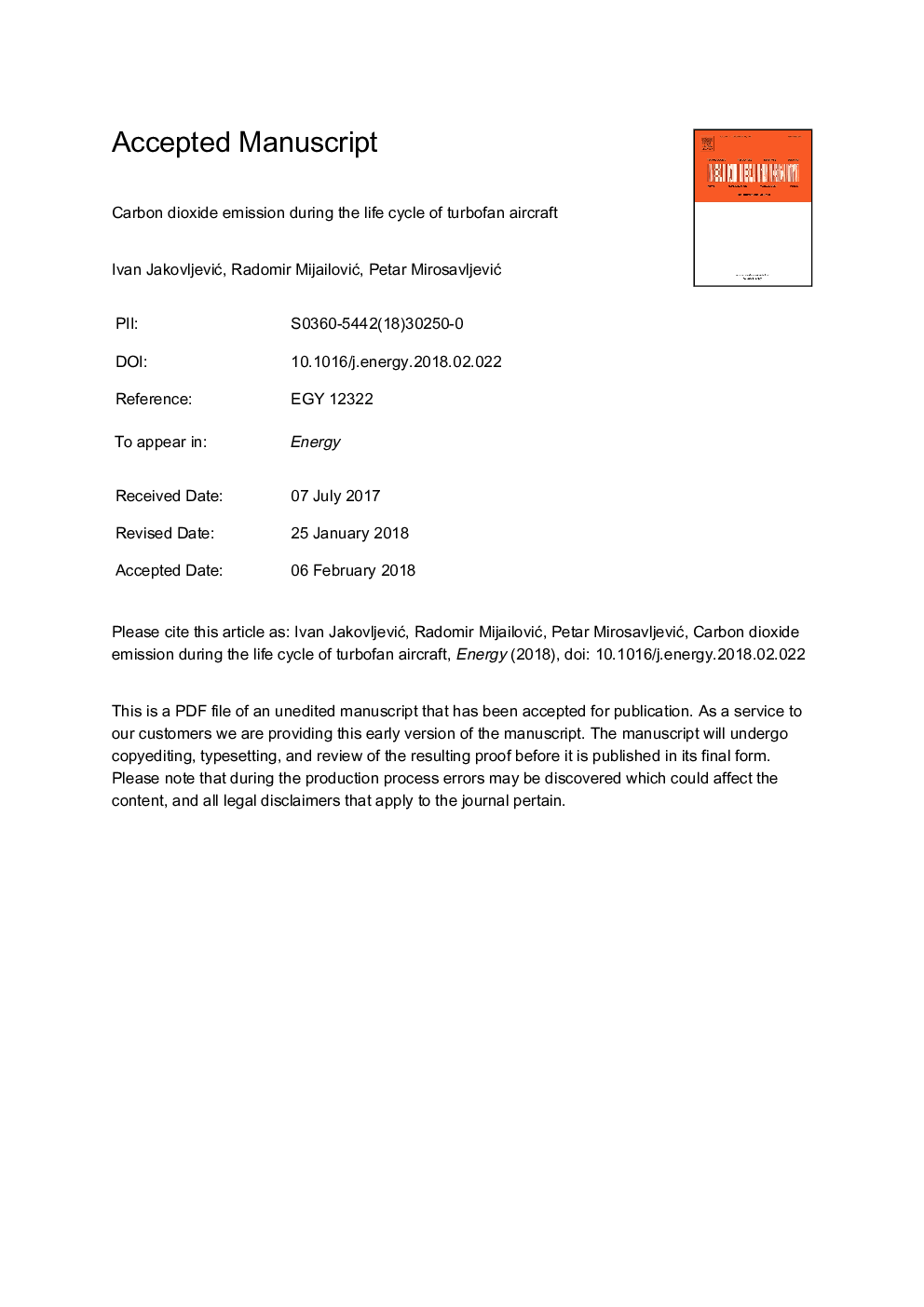| Article ID | Journal | Published Year | Pages | File Type |
|---|---|---|---|---|
| 8072059 | Energy | 2018 | 21 Pages |
Abstract
Aircraft performance degradation causes higher fuel consumption. This results in higher emission and it is an important factor when the complete life cycle is analyzed. Current research in the field doesn't quantify degradation emissions in the life cycle of an aircraft. The objective of this paper is to suggest a methodology for determining carbon dioxide emission during the life cycle of turbofan aircraft. Special attention is given to degradation and the importance of proper and timely maintenance as a way of controlling these emissions. Degradation plays a significant role in the carbon dioxide emission of turbo fan aircraft. The life cycle was modeled by eight sequences. In this paper a new mathematical interpretation is suggested for following life sequences: use and repair. In the use cycle, emission caused by aerodynamic structure degradation and engine degradation is calculated separately. The proposed methodology was implemented on four and tested on eight turbofan aircraft. Results show that more than 99% of carbon dioxide emission occurs in the use sequence. The emission caused by degradation (aerodynamic structure and engine) makes up between 3.6% and 6.4% of total carbon dioxide emission. A novel methodology for reducing emission caused by degradation is proposed by the authors.
Related Topics
Physical Sciences and Engineering
Energy
Energy (General)
Authors
Ivan JakovljeviÄ, Radomir MijailoviÄ, Petar MirosavljeviÄ,
